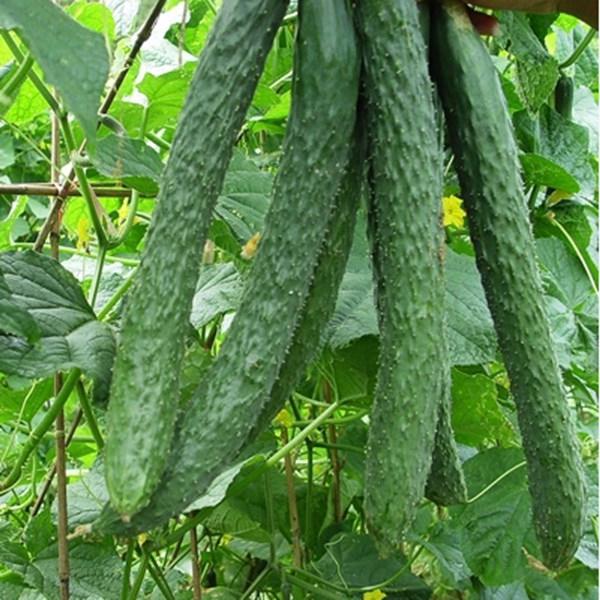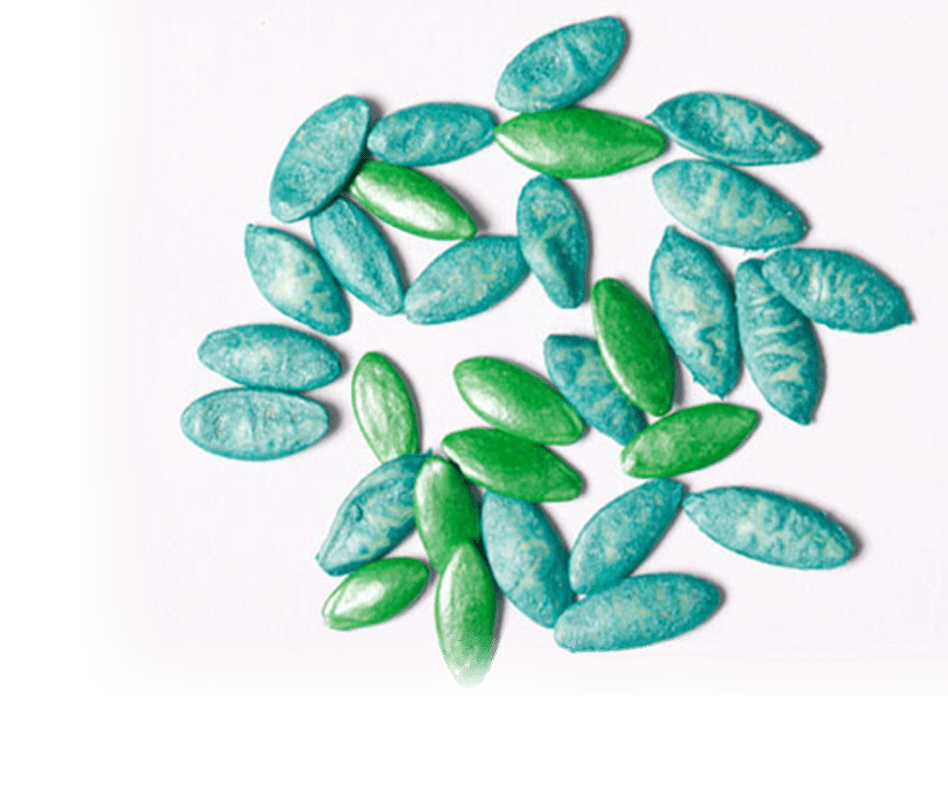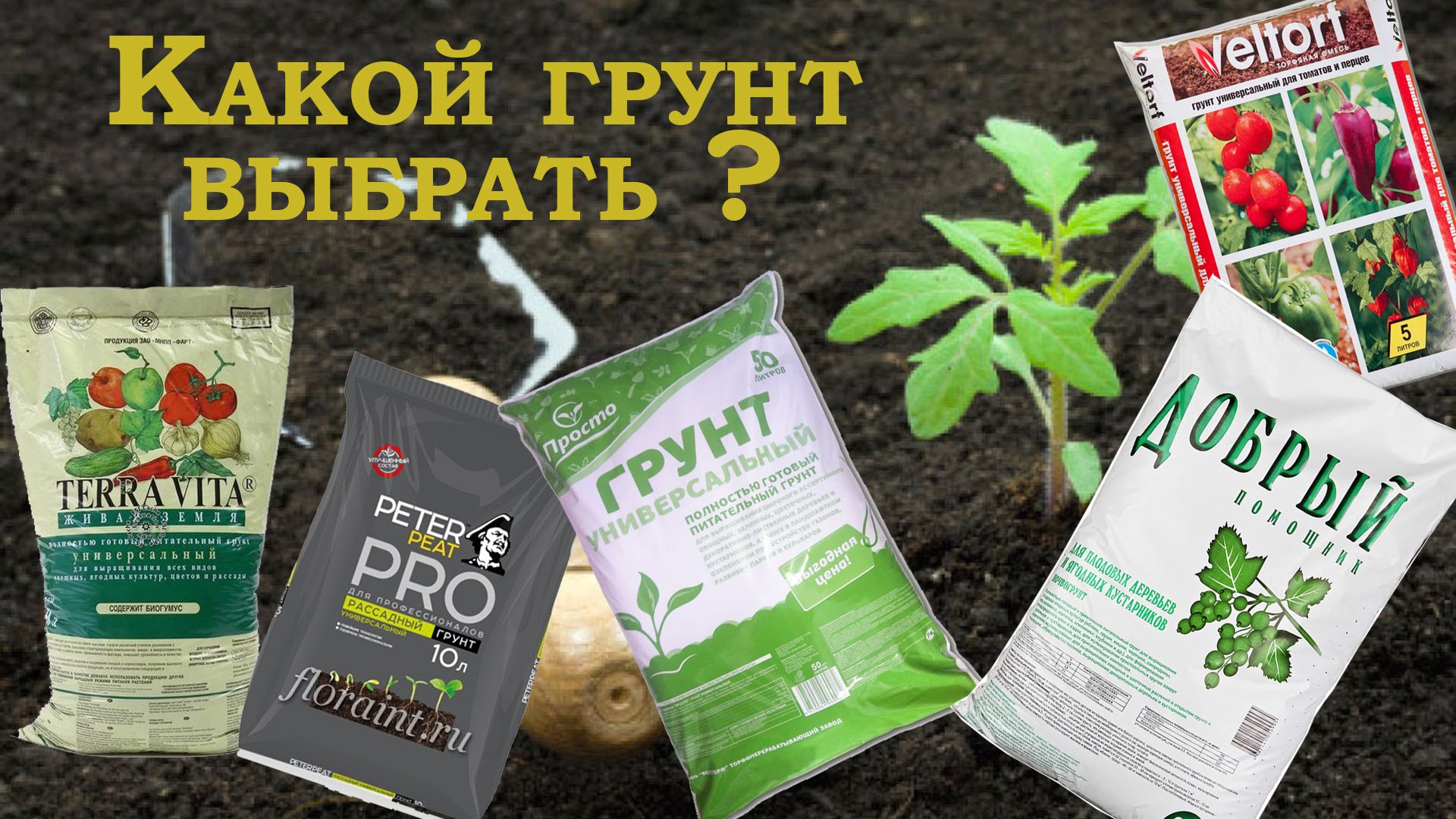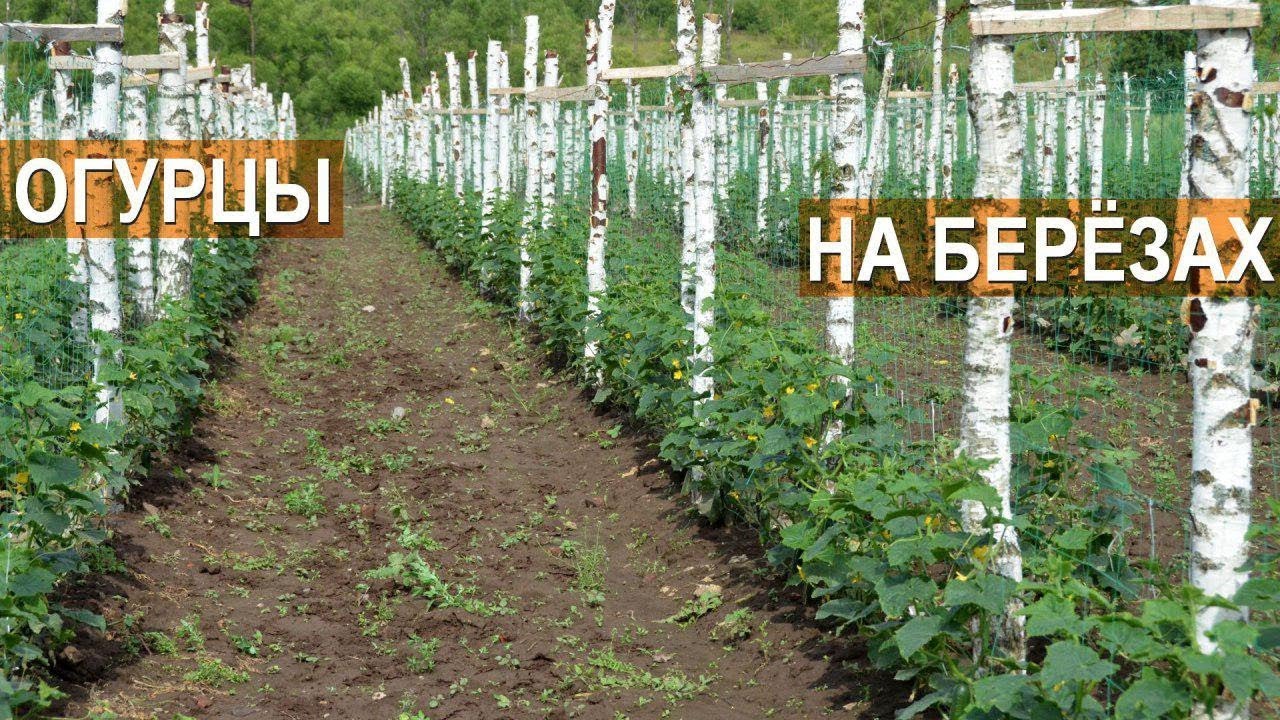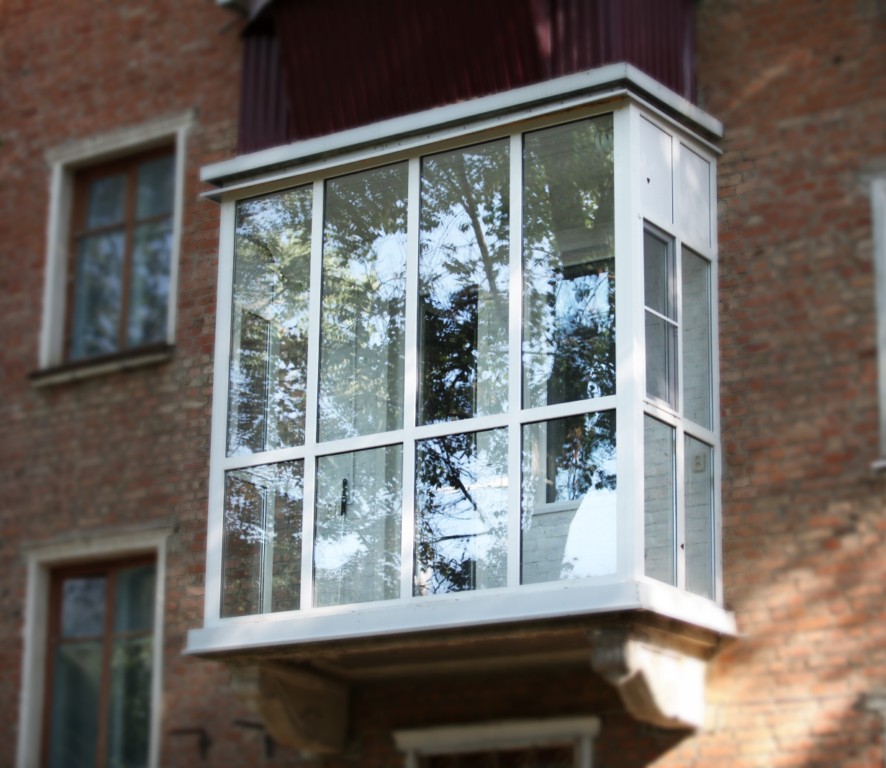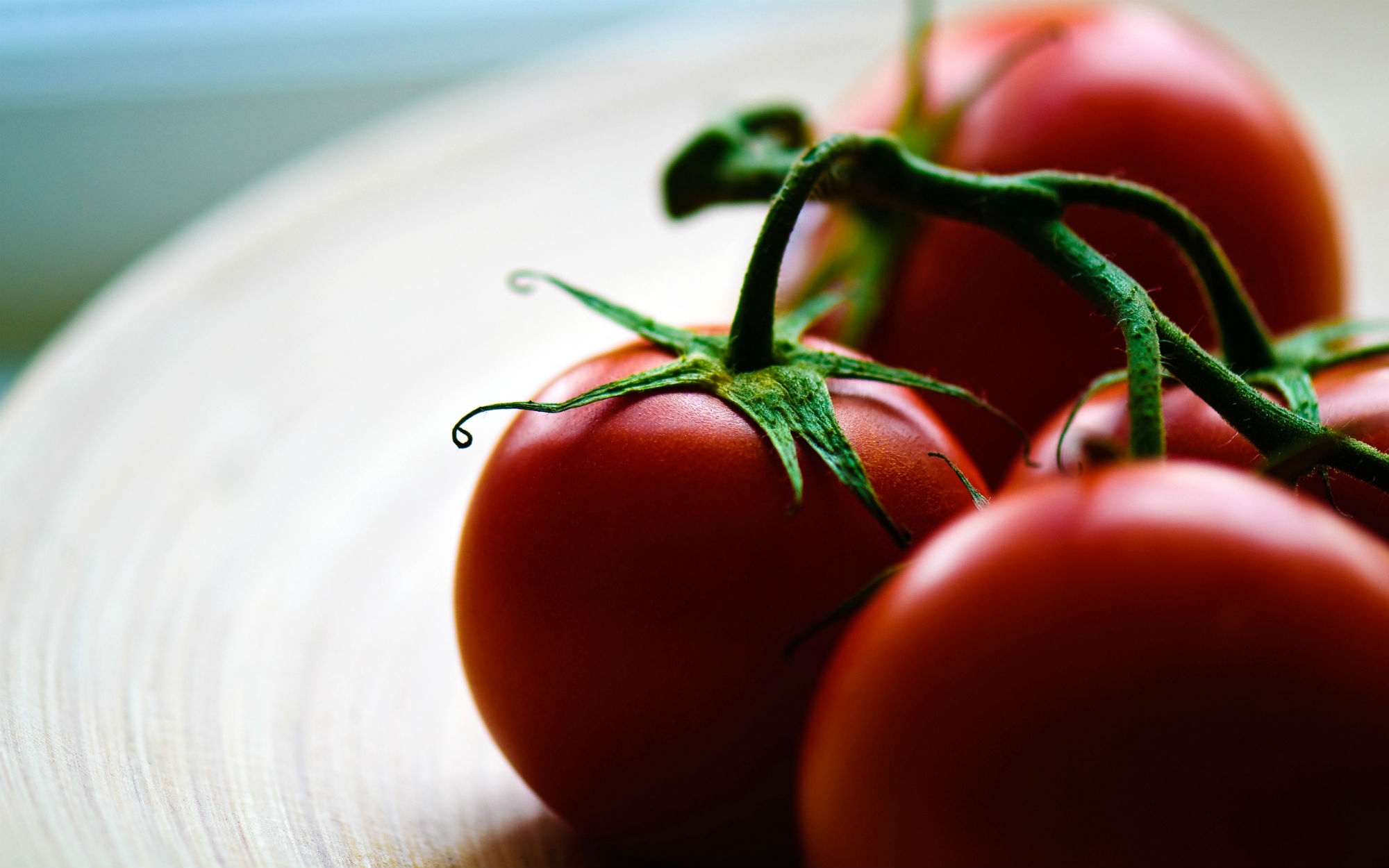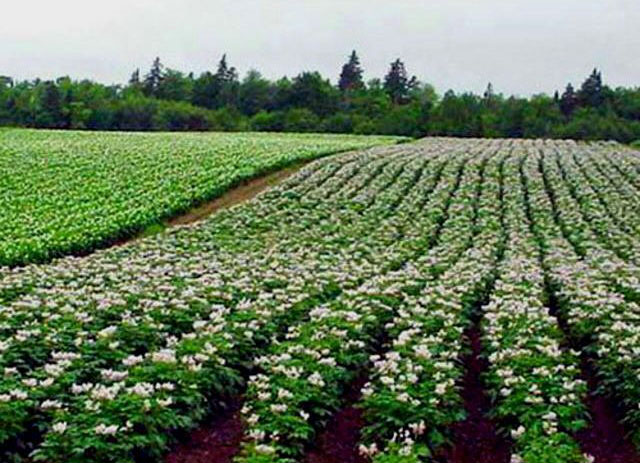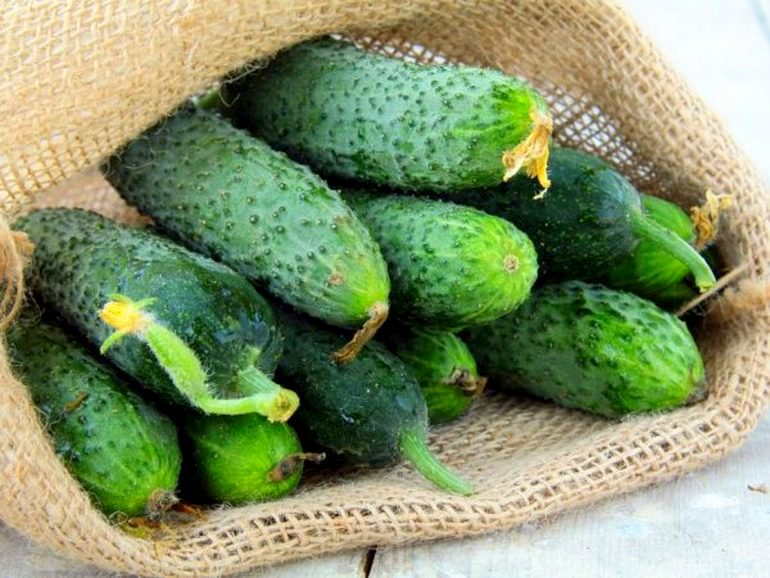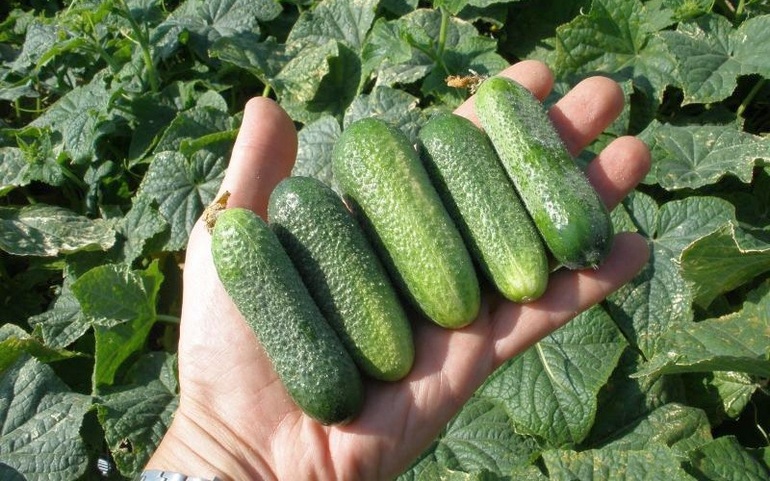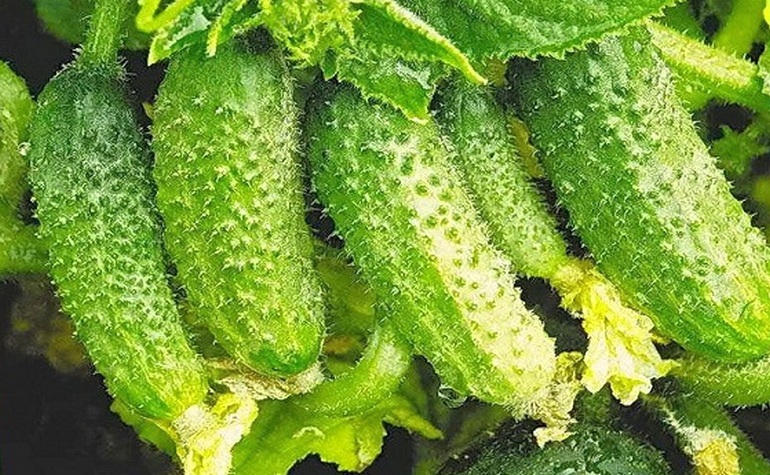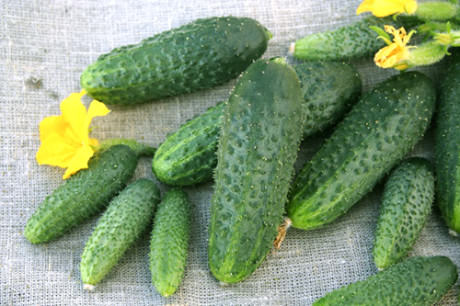Content:
What varieties and varieties of cucumbers are not grown on their beds by summer residents, these vegetables differ in fruit size, early maturity, lash length and foliage size. In this article, we will talk about Chinese cucumbers, a vegetable crop that has not yet become very popular among our vegetable growers, although these cucumbers have no less positive qualities than other varieties.
Features of culture
Although there are many varieties of Chinese cucumbers, and each of them has its own characteristics, there are a number of characteristics inherent in all varieties of this vegetable crop:
- fruits in length can reach 40-80 cm;
- Chinese cucumber tastes sweeter than other varieties of cucumbers, and its aroma simultaneously resembles the fruits of watermelon and melon;
- neither the peel nor the pulp of this variety has bitterness;
- peel color - rich emerald;
- the pulp is of medium density, there is no emptiness in it;
- the seeds are located in the center of the fruit.
Most varieties of Chinese cucumbers are self-pollinated, with only female flowers on lashes. These flowers are usually located in bunches of several pieces. The description of the variety will be incomplete without mentioning the excellent commercial qualities of ripe fruits that do not deteriorate during transportation.
Description and characteristics of common varieties of Chinese cucumbers
Popular varieties of long Chinese cucumbers:
- The Chinese miracle variety is a cucumber late in terms of ripening, at least 60 days pass from the moment of germination to harvest. The fruits are slightly curved, have the shape of a cylinder, the size of the green is about 50 cm, the skin is covered with small tubercles. The pulp is of medium density, sweetish in taste, without bitterness. The yield is above average, the marketable quality is not bad, and the harvest is well tolerated. Seedlings should be grown first (seed planting time is late March-early April). The seeds should be deepened up to 3.5 cm, the distance between crops is about 25 cm.Seedlings should be planted in open ground from the second decade of May to the first decade of June.
- White delicacy - the main "highlight" of the variety is the extraordinary color of ripe fruits, almost white. The ripening period of the fruits is average, from the moment the plants begin to grow to the collection of fruits, it takes almost two months. You can grow the variety in open and closed ground. The length of ripe greens is no more than 1 cm (which is not typical for Chinese varieties of cucumbers). The shape of the fruit is conical, the skin is covered with small tubercles. From one bush, you can collect at least 3.5 kg of ripe fruits. The white delicacy is pre-grown in seedlings, sowing seeds in March. In the open field, bushes of this variety are planted in 3 pieces per 1 m2. It is advisable to tie the whips of the variety to the supports.
- Chinese Snake - This type of Chinese cucumber can only be grown in a greenhouse. Branchy bushes, grow intensively, bear fruit for a long time. The fruits are long, slightly curving, like snakes. The rind is covered with sparse tubercles, its color is dark emerald. The seeds are collected in a small chamber and are practically invisible in food. Seedlings are planted for seedlings 20-30 days before planting in greenhouses. Seedlings must be dived. The plant is especially demanding for watering - the slightest violation of the regime affects the growth and development of plants. It is necessary to grow the Chinese snake on loose fertile soils.
- Emerald Stream - mid-season cucumbers, you can harvest the harvest 1.5 months after planting the seeds. Bushes - vigorous, climbing, branching weakly. The length of the fruit is 0.45-, 5 m, the weight of the ripe fruit is about 200 g, the green leaf has the shape of a cylinder, the color of the peel is richly emerald. On its surface there are a large number of large tubercles. From 1 m2, you can harvest up to 16-17 kg of the crop. For seedlings, seeds should be planted in the second decade of April. The containers for landing are wide. Strong seedlings are planted in the greenhouse as warm weather sets in. Scourges require binding.
- Heat-resistant Chinese - requires bee pollination. Fruit ripening time is about 2.5 months. The plant is formed into one stem, without side lashes. The shape of the fruit is cylindrical, up to 0.45 m long. The plant calmly tolerates an increase in temperature up to 30-32⸰С. The variety is grown in a seedling and non-seedling way. Seedlings are planted on seedlings in mid-April, in open ground - no earlier than mid-May. requires binding to strong supports.
- Alligator is a bee-pollinated variety, the first cucumbers can be harvested 1.5 months after the sprouts appear. Zelentsy - cylindrical, bright emerald color, about 40 cm long. Peel - with characteristic tubercles. Productivity - up to 17 kg per sq. m are grown through seedlings, which begin to be planted in the first decade of April. After 25-28 days, strong seedlings are planted in a permanent place. The best time for a transplant is the last decade of May - the first decade of June.
There are other less well-known varieties of Chinese cucumbers that can also be planted in our country on farms: Emperor, Jinn, Cold-resistant, Peking cucumber delicious.
Planting times and methods, seed and soil preparation
It is not difficult to grow Chinese cucumbers - they grow well in the open ground and in greenhouses, and some manage to grow them during the winter on the windowsill in the apartment (or on the insulated balcony). Since these vegetable plants do not require pollination by bees, they yield good yields indoors.
The seeds are bought in specialized stores. Such seed does not require pre-sowing preparation - it does not need to be disinfected, stratified (kept in the cold, and then warm for better germination). You can also not soak the seed - it will germinate quickly anyway.
In the southern regions of our country, Chinese cucumbers can be planted immediately in open ground, the sowing time depends on the degree of heating of the soil - its temperature should be at least 16-17 ° C, the ground should be warmed up to a depth of about 9-11 cm. You can plant seeds as in the landing holes and in the trenches.
In cooler climates, it is recommended to pre-grow seedlings at home. At the same time, it is necessary to calculate the time of sowing seeds for seedlings - after the emergence of sprouts, the mature seedlings should be planted in open ground or in greenhouses no later than 20-25 days, in mid or late May (depending on when the spring cold snaps end in the region ).
It is better to buy soil for seedlings in a specialized store - for seedlings of vegetable plants. Usually, the seeds are planted one at a time in cups with soil, so that later you do not need to dive the seedlings.
You can prepare a nutrient substrate yourself. To do this, it is necessary to mix humus, chernozem soil and sawdust in a 1: 2: 1 ratio. The same soil should be prepared in the area where these vegetables will be grown in the future.
The temperature at which the seeds should germinate is in the region of 30-32⸰С. To maintain such a temperature regime, containers with crops are covered with polyethylene and they are not removed even after germination. And only when the sprouts reach a height of 2-2.5 cm, the film can be opened at first for a while, and after 4-5 days it can be removed completely.
Care for the seedlings of these vegetables is standard - regular watering, periodic inspection of plants for the appearance of pests or signs of disease. During the growth period of seedlings, they are fed twice with complex fertilizers so that young plants grow stronger. As the first top dressing, you can use any ammonia fertilizer, which will speed up the growth of the aerial part of the seedlings.
If the problem is a short daylight hours, then fluorescent lamps should be placed next to the vegetable crop in order to illuminate the sprouts. During the growing season, plants need about 13-14 hours of daylight.
10-12 days before transplanting seedlings into open ground, they should be hardened. To do this, containers with young plants are taken out into the fresh air - at first for 15-20 minutes, every day increasing the time the seedlings are outside.
Further care of plants depends on where they will be grown.
Bush formation methods and cultivation features
Usually, Chinese cucumbers grow up to 2.5-3 m in height, but they practically do not form side shoots. Therefore, in any conditions, the bushes of these cucumbers are formed into one shoot and must be tied to trellises or supports.
In the open field
Seedlings in open ground can be planted in the first decade of May, but without fail - under a film shelter, which is removed only at the beginning of June, when night temperatures do not drop below + 18⸰С.
Seeds in open ground can be sown not earlier than the third decade of May (during this period the earth has already warmed up enough). But at first, the sprouts should also be covered with polyethylene.
Otherwise, in the open field, these cucumbers are looked after in the same way as in greenhouse conditions.
In greenhouses
In greenhouse conditions, such varieties of cucumbers are planted quite densely - at a distance of about 25 cm from each other. Simultaneously with the planting of seedlings, trellises are installed, to which tall shoots will be tied.
The main thing in caring for the bushes of these vegetables in greenhouse conditions is the watering regime, which must not be violated.Vegetables should be watered every three to four days, and the foliage should be sprayed with warm water every morning from a spray bottle. Several times per season, fertilizing is carried out with a solution of urea on the sheet. The first time the plants are fertilized 12-14 days after transplanting into the greenhouse, the next fertilizing is carried out every 2 weeks. In this case, the yield of the vegetable crop rises sharply.
Houses on a balcony or windowsill
Only self-pollinated varieties of Chinese cucumbers should be grown at home. Each seed is planted in a separate, sufficiently deep and wide container filled with nutritious soil. It is better to purchase varieties that do not grow above 1.5-2 m.
A strong support is installed near each shoot, to which the stem will be tied as it grows. Otherwise, caring for these cucumbers at home is the same as in greenhouse conditions. Also, if necessary, additional light sources are installed next to the plants if the duration of daylight hours is less than necessary.
Heat resistance and frost resistance of the species
Almost all varieties of these cucumbers tolerate the hot season well - up to 30-32⸰С. But it is advisable to spray the foliage with warm water in the evenings in the heat.
During the period of spring frosts, it is better to cover young seedlings with polyethylene so that they do not freeze. But adult plants can already safely tolerate a decrease in night temperature to 10⸰С.
Disease resistance of the species
Almost all varieties are distinguished by high resistance to diseases affecting the cucumber crop. But for preventive purposes, it is recommended to follow the rules of crop rotation. In greenhouses, spraying with copper sulfate is recommended after harvest.
In farms, if it is impossible to regularly change the place for planting this vegetable crop, deep autumn plowing of the soil and spring shedding of the soil with a solution of copper sulfate are required.
Chinese cucumbers feel comfortable in the beds and greenhouses in almost all regions of our country, if you provide them with proper care.
